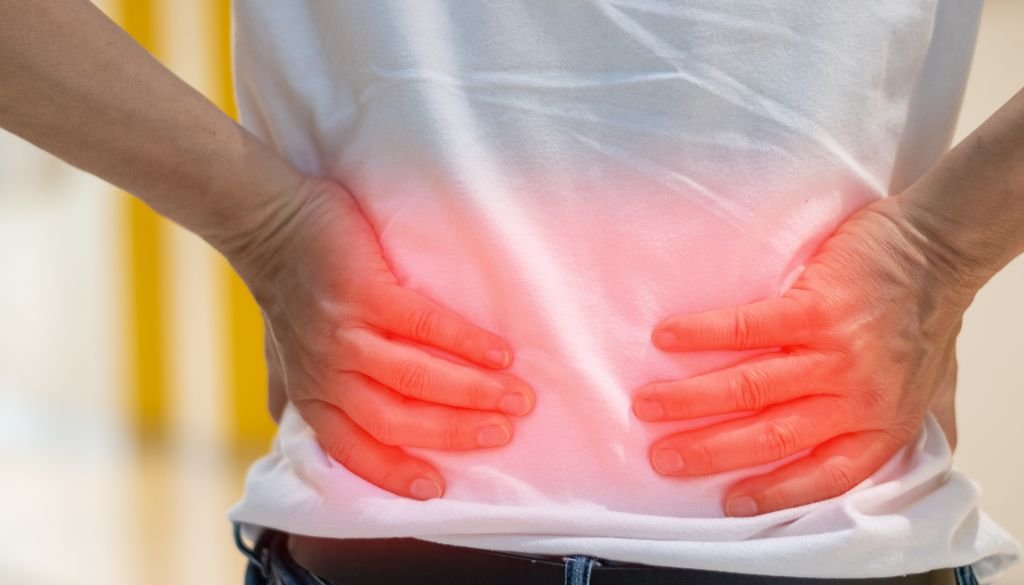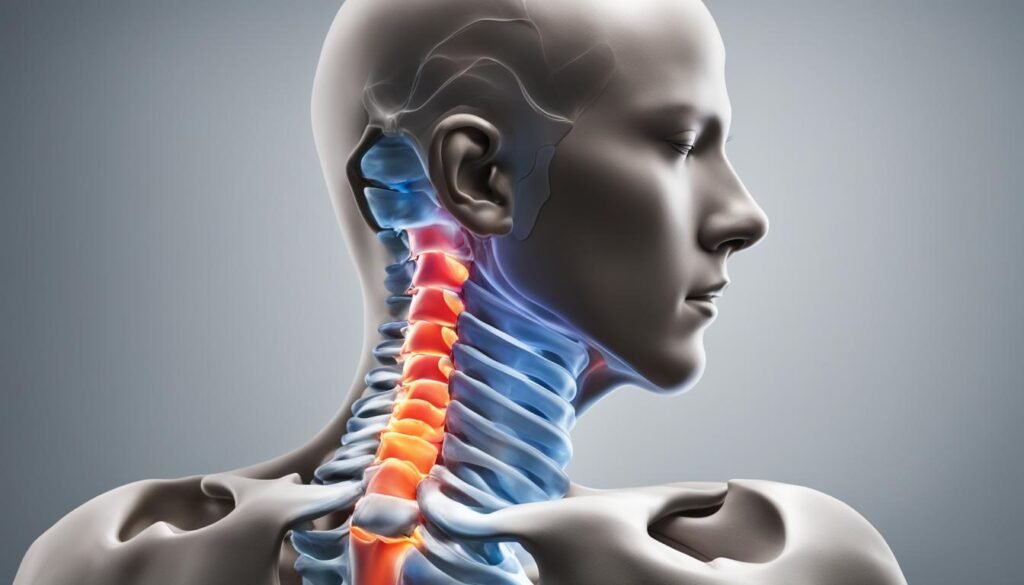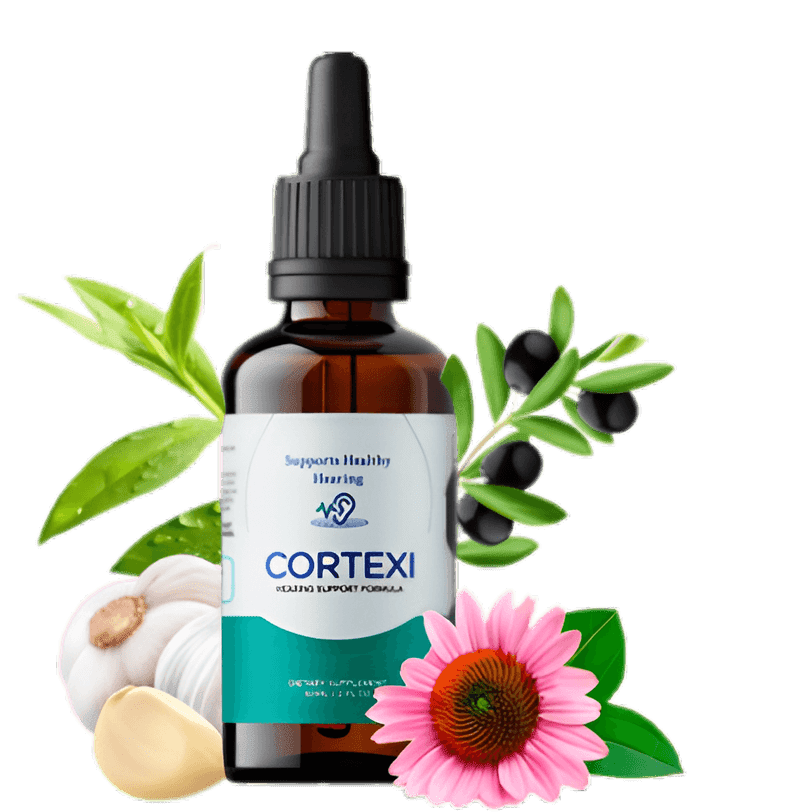Can a herniated disc cause tinnitus? This question is pertinent for individuals experiencing tinnitus, a ringing sensation in the ears, and herniated disc issues. This article delves into the potential connection between a herniated disc and tinnitus, providing insights based on medical research and studies.

A study published in PMC highlights that abnormalities in the cervical spine, including herniated discs, can affect ear vessels and nerves. These abnormalities may lead to hearing issues such as hearing loss, vertigo, or tinnitus. The study discovered a correlation between cervical spine injuries, limited range of motion (ROM) in neck rotation, and increased likelihood of hearing loss. These findings indicate that a herniated disc in the cervical spine could contribute to tinnitus, underlining the importance of understanding spinal health about auditory symptoms.
Key Takeaways:
- A herniated disc in the cervical spine can cause tinnitus.
- Cervical spine abnormalities can affect the ear vessels and nerves, leading to hearing loss, vertigo, or tinnitus.
- Individuals with limited range of motion in rotation to the left have a higher likelihood of hearing loss and tinnitus.
- Treating the cervical spine can improve tinnitus symptoms.
- A holistic approach considering the entire neck may relieve neck pain and tinnitus.
Understanding Cervical Spine Injuries and Ear Dysfunctions
The neck is a complex structure consisting of various vertebrae and soft tissues. Injuries to the cervical spine, particularly in the upper neck, can impact the arteries and nerves connected to the ears, leading to various auditory dysfunctions. These dysfunctions may include hearing loss, vertigo, and tinnitus.
Conditions such as osteoarthritis, rheumatoid arthritis, disk herniation, and whiplash can contribute to developing these ear-related symptoms. The upper cervical spine, which includes the occiput and the first and second vertebrae, is particularly vulnerable to abnormalities that can disrupt the function of the ear vessels and nerves.
There is a higher likelihood of hearing loss when there is a limited range of motion in the cervical spine, especially in rotation to the left. The flexibility and movement of the neck play a crucial role in maintaining the proper functioning of the auditory system. Therefore, monitoring the cervical range of motion, especially left rotation, can help predict hearing impairment in patients with cervical spine injuries.
In cases where instability is present in the craniocervical junction, specifically in the upper cervical spine, tinnitus can arise as a secondary symptom. Instability can result from torn or overstretched ligaments, prolapsed intervertebral discs, or other factors. Correcting and stabilizing the craniocervical junction can reduce or disappear tinnitus symptoms in many patients.
The Relationship Between Cervical Range of Motion and Hearing Loss
The range of motion is crucial when understanding the connection between cervical spine injuries and hearing loss. A study published in PMC found that individuals with a limited range of motion in rotation to the left had a higher likelihood of experiencing hearing loss. This suggests a direct correlation between cervical degree of motion and hearing impairment.
The study also revealed that limitations in flexion and extension motion were associated with hearing loss to a lesser extent. However, it is essential to note that there was no significant difference in the presence of limitations in the cervical range of motion between men and women. The focus on left rotation limitation and hearing loss in men indicates that monitoring the cervical range of motion, particularly left rotation, can be a helpful predictor of hearing impairment in patients with cervical spine injuries.
In summary, moving the neck freely is crucial in maintaining healthy hearing. Monitoring and addressing limitations in the cervical range of motion, especially left rotation, can help prevent or manage hearing loss in individuals with cervical spine injuries.
Key Takeaways:
- The study showed a significant correlation between limited range of motion in rotation to the left and hearing loss.
- Flexion and extension motion limitations were also associated with hearing loss to a lesser extent.
- Men and women had no significant difference in the presence of constraints or cervical range of motion limitations.
- Monitoring the cervical range of motion, particularly left rotation, can help predict hearing impairment in patients with cervical spine injuries.
Secondary Tinnitus as a Symptom of Instability in the Upper Cervical Spine
A study published in the International Tinnitus Journal has shed light on the connection between instability in the upper cervical spine and secondary tinnitus. The craniocervical junction, particularly the upper cervical spine, is crucial in developing tinnitus symptoms. Conditions such as torn or overstretched ligaments, prolapsed intervertebral discs and even metastases can cause instability in this area.

The study highlights the effectiveness of surgical correction and stabilization of the craniocervical junction in reducing or eliminating tinnitus symptoms. By addressing the underlying instability in the upper cervical spine, many patients experienced a notable improvement in their tinnitus. Optimal results were achieved through the physiological correction of the craniocervical junction geometry.
“Instability in the upper cervical spine can lead to tinnitus symptoms as a secondary effect. Surgical correction and stabilization of the craniocervical junction can significantly reduce or even eliminate tinnitus in many patients.”
These findings emphasize the importance of addressing the upper cervical spine when treating tinnitus. By targeting the underlying instability, healthcare professionals can provide effective interventions to alleviate symptoms and improve the overall quality of life for individuals with tinnitus.
The Role of the Lower Cervical Spine in Tinnitus
When exploring the connection between the cervical spine and tinnitus, it is essential to consider the role of the lower cervical spine, specifically the cervicothoracic junction. While the upper cervical spine is often associated with somatosensory tinnitus, recent research has shown that treatments targeting the lower cervical spine can improve tinnitus symptoms.
A study on tinnitus patients found that injecting the 8th cervical nerve in the lower cervical spine reduced symptoms for 26% of the participants. The successful patients reported a moderate decrease in their tinnitus, ranging from 25% to 50%. Moreover, half of these patients experienced benefits 6.6 months after the injection.
This research suggests that addressing the lower cervical spine, particularly the cervicothoracic junction, can significantly manage tinnitus symptoms. By targeting this region, healthcare professionals can relieve individuals suffering from tinnitus by employing targeted treatments or therapies.
Overall, understanding the role of the lower cervical spine in tinnitus can contribute to a more comprehensive approach to managing this condition. By considering the effects of the upper and lower cervical spine, healthcare providers can offer more targeted treatments that address the individual needs of patients experiencing tinnitus.
Treating the Lower Cervical Spine for Tinnitus Relief:
- Injection therapy targets the 8th cervical nerve in the lower cervical spine.
- Physical therapy techniques, such as mobilization and manipulation, to improve the function of the cervicothoracic junction.
- Exercises that specifically target the lower cervical spine to alleviate tension and promote better posture.
- Massage therapy to relieve muscle tension and improve blood circulation in the lower cervical spine area.
Neck Pain and Tinnitus: A Connection
Neck pain is often accompanied by tinnitus, a ringing or buzzing sensation in the ears. If you experience both symptoms, it’s essential to explore the potential connection between them and consider the role of neck therapy in finding relief. Addressing the underlying neck issues can alleviate your tinnitus symptoms and improve your overall quality of life.
Can adderall cause tinnitus? Our exclusive article on delves into the potential side effects of this medication, offering a clear perspective on its auditory impacts.
One approach to addressing neck-related tinnitus is through specific exercises that target the neck muscles and improve mobility. These exercises can help determine if the neck contributes to tinnitus symptoms. Additionally, myofascial release techniques, which involve applying gentle pressure to release tension in the muscles and fascia of the neck, can provide relief. Joint mobilizations, which focus on restoring normal joint movement, may also be beneficial in reducing both neck pain and tinnitus.
It’s important to note that neck therapy should be approached holistically, considering the entire neck rather than isolated areas. By seeking out professionals who specialize in neck therapy or following a tinnitus relief program that incorporates neck exercises, you can take a comprehensive approach to treating your symptoms. The “Test Your Own Neck” e-book can also be valuable for identifying any neck issues contributing to your tinnitus. You may find significant relief from neck pain and tinnitus by addressing the underlying neck problems.
Treating Neck Pain and Tinnitus: Key Takeaways
- Neck pain and tinnitus can be connected, and exploring the link between them is essential for finding relief.
- Specific neck exercises, such as those described in the “Test Your Own Neck” e-book, can help determine if the neck contributes to tinnitus symptoms.
- Myofascial release and joint mobilizations are effective treatments that can improve neck function and reduce neck pain and tinnitus.
- Treating the neck holistically, considering the entire neck rather than isolated areas, is crucial for optimal results.
- Seeking professional consultation or trying out a tinnitus relief program focusing on neck therapy can provide additional support.
Treating Tinnitus Holistically: The Importance of Neck Therapy
A holistic approach to treating tinnitus involves addressing various factors that may contribute to its development. While upper cervical spine treatments like surgery or manual therapy are commonly considered, the role of the entire neck in tinnitus should be considered. Screening patients to determine if they would benefit from cervical treatment can significantly improve success rates in managing tinnitus symptoms.
Read also: can a head cold cause hearing loss?
Incorporating a comprehensive neck therapy program can be an effective way to address tinnitus holistically. The “Test Your Own Neck” e-book is a valuable tool for self-assessment, helping individuals identify potential neck issues linked to their tinnitus symptoms. Furthermore, seeking out local professionals specializing in neck therapy or trying a tinnitus relief program at home can provide additional support and guidance.
Why Choose Neck Therapy for Tinnitus Relief?
“Addressing the underlying neck issues can help alleviate tinnitus symptoms,” says Dr. Jane Collins, a renowned neck therapist. “Neck exercises, such as those recommended in tinnitus relief programs, can improve neck function and movement, potentially reducing the intensity and frequency of tinnitus.”
Neck therapy focuses on enhancing neck mobility, relieving muscle tension, and improving overall neck health. By combining exercises, myofascial release techniques, and joint mobilizations, individuals experiencing neck pain and tinnitus may find significant relief. This approach aims to restore proper alignment and function in the cervical spine, reducing the strain on the ear vessels and nerves and alleviating the associated tinnitus symptoms.
Considering neck therapy integral to a holistic tinnitus treatment plan is essential. By addressing the underlying neck issues, individuals can optimize their chances of finding relief from tinnitus and improve their overall quality of life.
Conclusion
The connection between a herniated disc and tinnitus is evident through the effects of cervical spine abnormalities on the auditory system. Research shows that individuals with limited range of motion, especially in left rotation, have a higher likelihood of hearing loss. Instability in the upper cervical spine can also contribute to tinnitus symptoms. Treating the neck and upper and lower cervical spine can improve tinnitus symptoms. A holistic approach that includes exercises, manual therapy, and other treatments may relieve individuals experiencing neck pain and tinnitus.
Frequently Asked Questions
Can a herniated disc cause tinnitus?
Yes, a herniated disc in the cervical spine can cause tinnitus. Abnormalities in the cervical spine can affect the ear vessels and nerves, leading to hearing loss, vertigo, or tinnitus.
How do cervical spine injuries affect the ears?
Cervical spine injuries, particularly in the upper cervical spine, can affect the arteries or nerves related to the ear and disrupt their function. This can result in hearing loss, vertigo, or tinnitus.
Is there a connection between cervical range of motion and hearing loss?
Yes, a limited range of motion in the cervical spine, especially in rotation to the left, is correlated with hearing loss. Flexion and extension motion limitations also contribute to hearing loss to a lesser extent.
How does instability in the upper cervical spine relate to tinnitus?
Instability in the craniocervical junction, particularly in the upper cervical spine, can cause tinnitus. Conditions such as torn ligaments, prolapsed intervertebral discs, and metastases can contribute to this instability.
Can treating the lower cervical spine improve tinnitus symptoms?
Treating the lower cervical spine, particularly the cervicothoracic junction, can improve tinnitus symptoms. Injections to the 8th cervical nerve have reduced symptoms for some tinnitus patients.
Can addressing neck issues alleviate tinnitus symptoms?
Yes, addressing underlying neck issues can help alleviate tinnitus symptoms. Tinnitus exercises, myofascial release, dry needling, and joint mobilizations are treatment options that can improve neck function and movement, potentially reducing tinnitus symptoms.
How vital is neck therapy in treating tinnitus?
Neck therapy, including upper and lower cervical spine treatments, addresses tinnitus. A holistic approach that considers the neck’s role in tinnitus, such as surgery or manual therapy, can improve treatment success rates.
What is the connection between a herniated disc and tinnitus?
The connection between a herniated disc and tinnitus is evident through the effects of cervical spine abnormalities on the auditory system. Research shows that individuals with limited range of motion, especially in left rotation, have a higher likelihood of hearing loss. Treating the neck and upper and lower cervical spine can improve tinnitus symptoms.



